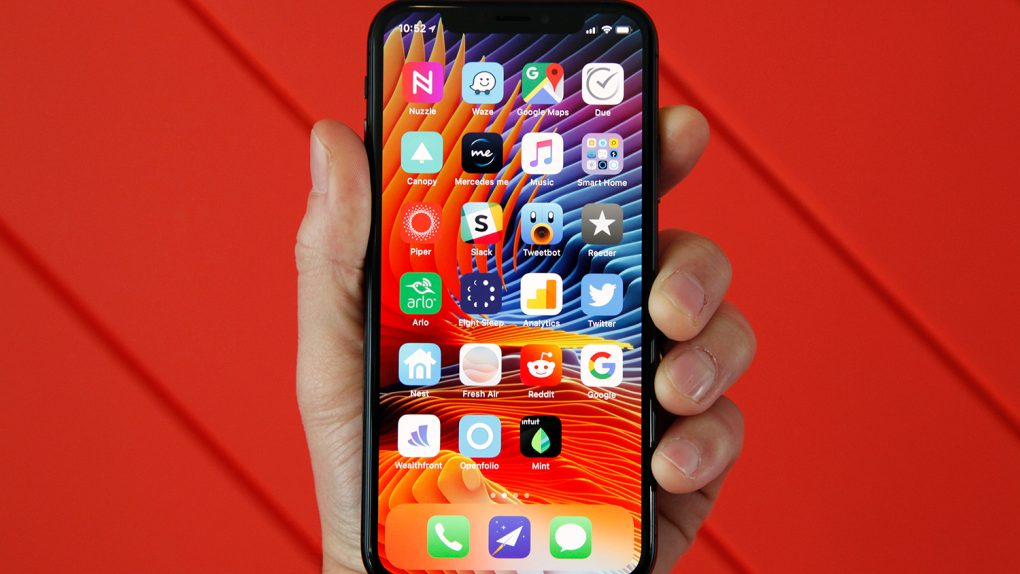It’s only Monday, so it’s a bit early to state conclusively that the article linked within this post is the most ridiculous thing you’ll read all week. We’re going to go out on a limb, however, and say that it is highly unlikely that anything will top it. Late last year, Apple finally released the completely redesigned iPhone that fans had been anxiously awaiting for years. Dubbed iPhone X to mark the tenth anniversary of Apple’s first iPhone, the handset is a bold reimagining of the iPhone experience. Beyond the new hardware design, the handset ditches Apple’s iconic home button and replaces its functionality with a series of gestures. Touch ID was also abandoned in the new iPhone X, paving the way for Apple’s new Face ID authentication technology.
For some iPhone users, the iPhone X is a lot to take in at once. It changes the iPhone user experience on so many levels, and it may come as something of a shock after Apple used almost the exact same iPhone design for three consecutive years. But is it a failure?
There are problems scattered through this curious blog post that was published on Fast Company’s design blog as 2017 was winding down. In fact, the biggest problem with the post might not even be the iPhone X take. Instead, it could be the first product listed in this post, which is Amazon’s entire Echo device line.
The author argues that continued engagement with Amazon Alexa is typically quite low, and that is true according to some estimates. Those estimates have hardly been confirmed though, and others state that the opposite is in fact the case. Amazon and third-party companies that build products with Alexa are the only ones that know for certain, and the continued onslaught of countless new devices with Alexa integration suggest Amazon’s voice assistant is pretty popular. Does anything that has been announced at CES 2018 so far not have Alexa integration?
Moving right along, here’s the article’s paragraph on the iPhone X:
The iPhone X is the epitome of fluff-over-function. It’s a phone packed with features that nobody asked for. Its edge-to-edge-but-not-really screen is impossible to use with only one hand and wastes hundreds of pixels on its round corners and top notch. FaceID created a user experience nightmare by eliminating of the home button in favor of arbitrary gestural UI. Yet Apple’s marketing has managed to successfully polish these unnecessary features into the “Phone of the Future.”
That is… an interesting take, to say the least. Phrases like “epitome of fluff-over-function” and “packed with features that nobody asked for” are the first indication that this is a bit over the top, and it’s quite clear that this blogger is not a fan of the iPhone X. But the evidence the blogger cites to support his various claims is the biggest red flag.
Rather than offering survey data or any sort of end-user opinions on the matter, the author points to three different articles to support his various claims:
- The claim that the iPhone X is “the epitome of fluff-over-function” is supported by a link to another blog post by the same author where he complains about things like Face ID and the phone’s A11 Bionic processor, which he says “seems the same” as the previous-generation A series processor
- The claim that Face ID is a “user experience nightmare” is supported by a link to yet another post by the same author peppered with complaints about Face ID and the iPhone X’s user interface
- The claim that the iPhone X is “impossible to use with only one hand” is supported by a link to another blogger’s review that discusses the difficulty he has using the phone with one hand
Long story short, this author is making sweeping claims and supporting those claims with either his own opinion or the opinion of one other blogger.
It’s quite clear that this author is not a fan of Apple’s iPhone X, and there’s obviously nothing wrong with that. We’re sure there are plenty of other people out there who have tried the phone and don’t like it. You wouldn’t know if from this article, however, which bases the claim that the iPhone X is one of 2017’s “biggest, baddest hardware failures” on the opinions of two bloggers. Two.
By all accounts, Apple has sold many, many millions of iPhone X units so far. We can’t speak too broadly about customer satisfaction at this point since we try not to make sweeping claims without supporting evidence, but our own sources at Apple and carrier retail stores have suggest that return rates have been in line with previous iPhone launches. That doesn’t sound like much of a failure to us.
Sure, there are people who have had issues with certain iPhone X features, particularly Face ID. Most people will recall, however, that complaints surrounding Touch ID were just as numerous and dramatic when that technology first debuted in 2013. Touch ID would go on to become the standard by which all other mobile authentication solutions are measured.
In the end, everyone is entitled to his or her opinion, but let’s try not to get carried away. A product with sales in the double-digit millions just two months after launch is hardly one of 2017’s “biggest, baddest hardware failures” because one or two bloggers don’t like it.








